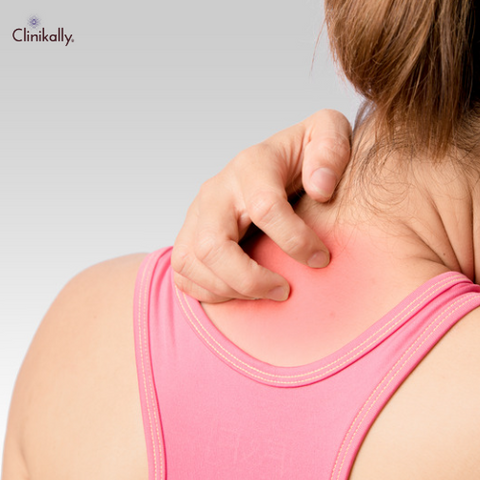Sunburns - we've all been there, and they're anything but pleasant. As summer rolls around, many of us look forward to the joys of outdoor activities, but overexposure to the sun's UV rays can lead to harmful sunburns and, in the long run, serious skin damage. This guide will delve into the science behind sunburns, how to treat them, and, importantly, how to prevent them.
The Science Behind Sunburns and Skin Damage

The sun's warm rays beckon us to bask in its glow, but beneath its inviting surface lies a hidden danger that can wreak havoc on our skin. Sunburns, with their painful redness and peeling, serve as a stark reminder of the harmful effects of prolonged sun exposure. However, there is much more to sunburns than meets the eye. In this article, we delve into the science behind sunburns and skin damage, exploring the intricate processes that occur within our skin when exposed to the sun's ultraviolet (UV) radiation. From the immediate inflammatory response to the long-term consequences of cumulative sun exposure, understanding the mechanisms at play can help us better protect and care for our skin. Join us as we unravel the secrets behind sunburns, shedding light on the intricate interplay between sunlight and our body's largest organ.
How UV Rays Affect Your Skin
Ultraviolet (UV) rays from the sun come in two types: UVA and UVB. UVA rays penetrate deep into your skin's thickest layer, the dermis, causing premature aging and wrinkles. On the other hand, UVB rays primarily affect the skin's topmost layer, the epidermis, leading to sunburns and potential skin cancer.
Sunburn is an inflammatory reaction of the skin to excessive UV radiation. The redness, heat, and pain of a sunburn are due to increased blood flow to the affected area, initiated by the body's immune system response to repair damaged cells.
The Risks of Sunburns and Sun Damage
Regular and prolonged exposure to UV rays can cause a slew of issues. Apart from immediate sunburn symptoms, it can lead to the degradation of collagen and elastin, causing skin aging. It also significantly increases the risk of skin cancer, particularly melanoma, the deadliest type of skin cancer.
Treating and Soothing Sunburned Skin
After a long day under the scorching sun, it's not uncommon to find ourselves nursing a painful reminder of our sun-soaked adventures: a sunburn. Sunburned skin can be uncomfortable, tender, and sometimes even blistered, making it essential to understand how to effectively treat and soothe this common condition. In this article, we delve into the world of sunburn care, exploring a range of remedies and strategies to alleviate the discomfort and promote healing. From topical treatments to natural remedies, we uncover evidence-based solutions to help you find relief and restore your skin's health. Join us as we explore the art of healing sunburned skin, equipping you with the knowledge to recover and rejuvenate your body's outermost shield.
Home Remedies for Sunburn Relief
The first step is cooling down the skin to alleviate the immediate heat and pain. Cold compresses, cool baths, and damp, cool towels can help. Staying hydrated is also essential as sunburns can lead to fluid loss.
One popular home remedy is using black tea. The tannic acid and theobromine in tea help remove heat from sunburns, while the catechins repair skin damage and prevent further damage.
The Benefits of Aloe Vera for Sunburned Skin
Aloe vera has been a trusted treatment for sunburns for centuries. It boasts anti-inflammatory properties, reducing redness and swelling. Plus, it has a high water content, helping to rehydrate your skin, and it stimulates collagen production, promoting healing and reducing peeling.
Preventing Sunburns and Protecting Your Skin

As the sun's warm embrace invites us outdoors, it's crucial to remember that enjoying the sunshine comes with a responsibility to protect our skin from its harmful rays. Sunburns not only cause temporary discomfort but can also lead to long-term skin damage and increase the risk of skin cancer. In this article, we delve into the realm of sunburn prevention, arming you with practical knowledge and effective strategies to shield your skin from the sun's damaging ultraviolet (UV) radiation. From understanding the importance of sunscreen and protective clothing to exploring the best practices for sun safety, we unveil a comprehensive guide to help you enjoy the great outdoors while keeping your skin healthy and radiant. Join us as we embark on a journey of sunburn prevention, empowering you to safeguard your skin and embrace the sun responsibly.
Sunscreen 101: How to Choose and Apply the Right SPF
Choose a sunscreen that provides broad-spectrum protection, meaning it protects against both UVA and UVB rays. The SPF (Sun Protection Factor) should be at least 30 for daily use, but if you're planning prolonged outdoor activities, opt for an SPF of 50 or more.
Remember to apply sunscreen generously and evenly at least 15-30 minutes before sun exposure and reapply every two hours, or immediately after swimming or sweating.
Tips for Staying Safe in the Sun
Beyond sunscreen, wear sun-protective clothing, wide-brimmed hats, and UV-blocking sunglasses. Seek shade during the peak sun intensity hours of 10 a.m. to 4 p.m. Keep in mind that sunburn can happen even on cloudy days as UV rays can penetrate clouds. Also, be aware that UV rays can reflect off surfaces like water, snow, and sand, increasing the intensity of sun exposure.
Avoid tanning, whether it's under the sun or in a tanning bed. Contrary to popular belief, there's no such thing as a 'healthy tan.' A tan is a sign that your skin has been damaged and is trying to protect itself from further harm.
Post-Sunburn Care: How to Help Your Skin Heal
Sunburns can leave our skin feeling tender, red, and in need of some extra care. When the sun's rays have taken their toll, it's important to know how to nurture and aid the healing process of our sun-damaged skin. In this article, we delve into the realm of post-sunburn care, exploring effective strategies and remedies to support your skin's recovery. From soothing lotions to hydration techniques and lifestyle adjustments, we uncover a range of evidence-based practices that can alleviate discomfort, promote healing, and restore your skin's vitality. Join us as we embark on a journey of post-sunburn care, equipping you with the knowledge and tools to help your skin heal and bounce back from the sun's unforgiving touch.
Hydrating and Moisturizing Your Sunburned Skin
Hydrating and moisturizing are two crucial steps in after-sun care. Sunburns can dry out your skin, so drink plenty of water to replace lost fluids. Apply a water-based, fragrance-free moisturizer to the sunburned areas. This not only soothes the skin but also traps water in the skin, helping to alleviate dryness and peeling.
How to Recognize Signs of Skin Damage and Melanoma
Regular self-examinations of your skin are essential to identify early signs of skin damage and potential skin cancer. Look for any changes in the size, shape, color, or texture of moles, freckles, or birthmarks. New, unusual, or 'ugly duckling' moles or skin growths should be evaluated by a dermatologist.
In particular, pay attention to the ABCDEs of melanoma: Asymmetry, Border irregularity, Color variability, Diameter larger than 6mm, and Evolving or changing moles. If you notice any of these signs, seek medical advice immediately.
The risk of skin cancer underscores the importance of sunburn prevention. But if sunburn occurs, timely and appropriate treatment can minimize discomfort and damage. Ultimately, the key to skin health is respecting the sun's power, understanding your skin's needs, and adopting a well-rounded approach to sun protection.
In summary, sunburns aren't just painful - they're a clear sign of skin damage. Avoiding overexposure to the sun, understanding the potential risks, and using effective prevention and treatment strategies are crucial for maintaining healthy skin. So as you enjoy the summer, remember to protect your skin from the sun's harmful rays. Your skin will thank you in the long run!
In conclusion, recognizing the signs of skin damage and staying vigilant for potential melanoma is essential for maintaining skin health. Regular self-examinations allow you to identify any changes or abnormalities in your skin, particularly in moles, freckles, or birthmarks. Remember the ABCDEs of melanoma and consult a dermatologist if you notice any asymmetry, border irregularity, color variability, diameter larger than 6mm, or evolving moles. Prompt medical attention can make a significant difference in detecting and treating skin cancer.
The significance of sunburn prevention cannot be overstated when it comes to protecting your skin. By respecting the power of the sun, understanding your skin's needs, and implementing comprehensive sun protection measures, you can reduce the risk of sunburns and potential long-term damage. However, if sunburn does occur, timely and appropriate treatment is crucial to minimize discomfort and promote healing.
Ultimately, maintaining healthy skin requires a holistic approach. It involves being mindful of sun exposure, using sunscreen consistently, wearing protective clothing, seeking shade during peak hours, and staying hydrated. Additionally, nurturing your skin with moisturizers, soothing remedies, and adequate hydration can aid in the recovery process.
As you embark on your summer adventures, always keep in mind the importance of protecting your skin from the sun's harmful rays. By following the guidelines and strategies outlined in this article, you can maintain healthy, radiant skin and reduce the risk of sunburns, skin damage, and melanoma. Embrace the beauty of the sun responsibly, and your skin will thank you for it in the long run.









































